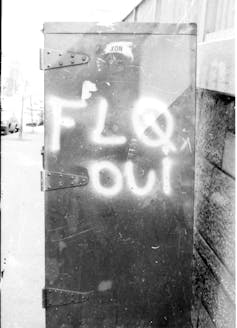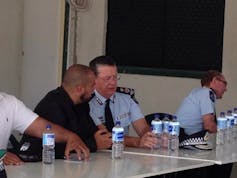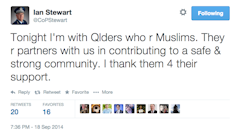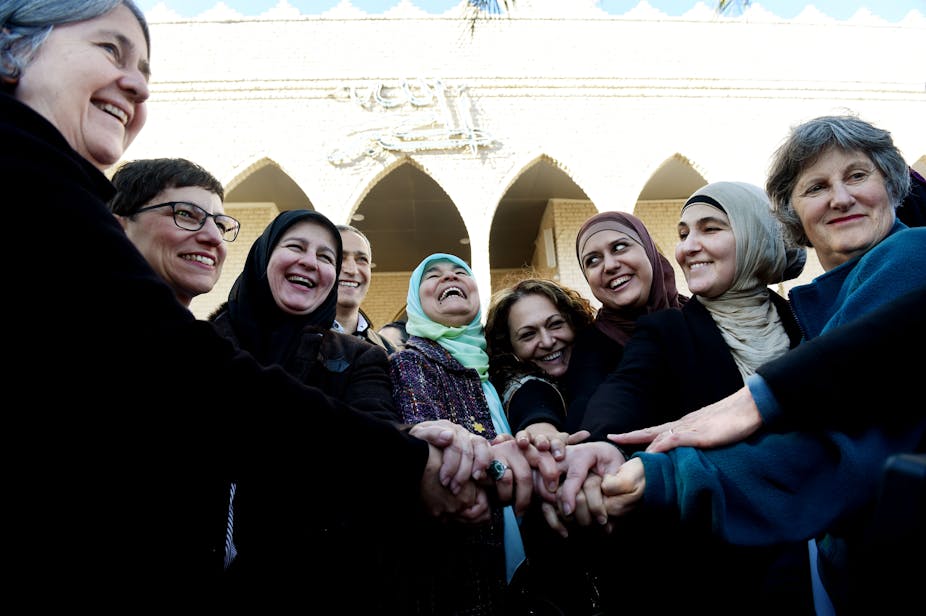From anarchists in the 1920s and radical leftists in the 1960s, to fringe, extreme-right Christian bombers or gunmen in the United States in recent decades, or radical Islamists such as Islamic State today, terrorist groups have one thing in common. They seek to shock, while simultaneously portraying themselves as victims. While their beliefs can vary wildly, what they all share is the “propaganda of the deed” in their extreme violent activities.
Typically, political violence in the most extreme form – terrorism – usually will see groups fracture in to smaller sub-groups. Once violence is legitimated, it then becomes a way to settle internal disagreements as well.
Given that we have seen a number of terrorist groups come and go over the decades, it bears scrutiny how these various groups were successfully stopped, as well as where governments failed. Buying in to media hype actually helps terrorist organisations to create public suspicion, division among groups and eventual social disorder where terrorism can thrive.
Whether it is in Iraq, Australia, Britain, or Canada, radical groups will try to draw legitimate political authorities into a violent confrontation of some kind.
Public and government reprisals against any defined group is precisely what terrorists want. It legitimates their standing as victims rising up against their oppressors through the use of violence, ever more extreme.
This is at least one reason why launching military raids against Islamic State is so risky. It is also why large-scale invasions of homes – although sometimes necessary – must be managed carefully to avoid creating deeper community divisions, which can inadvertently play into the terrorists’ hands.
And there are lessons from overseas – including from Canada, Northern Ireland, Indonesia and Malaysia – on how we might manage today’s terrorists threats.
Canada’s handling of violent separatists
In the 1960s and 1970s, Canada faced its own “homegrown terror cell”: French-Canadian nationalists the Front de libération du Québec (or FLQ). The FLQ had a history of deadly armed robbery and more than 200 bombings. In October 1970, they kidnapped a British diplomat and demanded the release of 23 prisoners in return for releasing him.

Prime Minister Pierre Elliott Trudeau’s response to what became known as the October crisis was criticised by some at the time. But it is widely seen now as a political masterstroke.
Showing the force of legislative powers by invoking the War Measures Act, Trudeau sent tanks and soldiers in full battle gear into the streets of Montreal to show that the state was mobilised and ready. However, Trudeau avoided wholesale raids on homes (although some were indeed raided).
At the same time, a clear, sympathetic message was delivered by the government that Quebec’s French-speaking locals were right to be disgruntled about feeling like second-class citizens. Trudeau reinforced linguistic and cultural recognition of the minority that the FLQ terrorists were trying to appeal to, so the government undermined their legitimacy.
From the Troubles to Toronto
Crackdowns on communities rarely work without serious consequences. A good example of the failure of a heavy-handed approach can be seen in how successive British governments tried to “solve” Northern Ireland’s violent 30-year conflict with military crackdowns, without addressing underlying community concerns.
Ultimately it was patient political negotiation through the Good Friday Agreement that ended decades of bloodshed.
More recently in 2006, Canada faced a terrorist plot similar to what has been alleged here in Australia this week. A group of 18 young men – commonly referred to as the “Toronto 18” – were arrested over ambitious though amateurish plans to carry out a series of armed assaults and truck bombings (using a tonne of ammonium nitrate purchased on one perpetrator’s credit card). There were even discussions about beheading Canadian Prime Minister Stephen Harper and driving a ute up the steps of the parliament in Ottawa.
The local and federal police forces succeeded in tracking and infiltrating the group, partly thanks to cooperation from the local Islamic community. While some of the men got off with only light sentences (and two of the accused are believed to have died fighting in Syria), Canada has since reviewed its terrorism sentencing and brought in life sentences as a much stronger deterrent.
Community leadership


Crucially, in many of the recent cases of radicalised young men both in Canada and in Australia, members of the Islamic community have often helped to identify the radicals amongst themselves. While many did not agree with the sometimes heavy-handed approach of investigations, they certainly did not want the violence brought to their own communities.
Since the Toronto 18 case, further plots have occurred in Canada but have been quietly thwarted. Last year, two Canadian men were arrested for plotting to derail a passenger train travelling between Toronto and New York – and it was a tip-off from a prominent Toronto imam (Muslim community leader) concerned about the one of the suspect’s behaviour that sparked the investigation. As local man Hussan Hamdani explains in this news video:
This was a tip that came from the Muslim community because they had good relations with [the Canadian police], because they had this long-standing bridge-building long before this incident ever took place.
Community cooperation in the UK and Australia has also been vital, as both the former head of international counter-terrorism at New Scotland Yard, Nick O'Brien, and the Global Terrorism Research Centre international director, Greg Barton, have said this week. For example, the 2005 arrests of men in Melbourne and Sydney under Operation Pendennis followed a tip-off from Melbourne’s Muslim community.
Tracking a radical minority

Terrorism is not a new problem. If history teaches us anything, it’s that close connections with any self-defined community – especially one that is having a series of internal problems associated with violence – is a key to effective policing.
In Indonesia and Malaysia, counter-terror measures include cataloguing how radical Islamists are speaking in public and what actions they suggest their followers take.
The authorities know where the threat lies, and allowing the preaching to go on takes away the argument that radical Islam is being stifled. In the meantime, Indonesia proceeds along a path of democratisation. That’s certainly not without problems – but for a nation of 250 million people, its democratic progress in less than two decades has been extraordinary.
The good news
If there any upside to this week’s raids and terrorism allegations, it’s that the plotters in Australia don’t seem to show anywhere near the same levels of organisational competence as other terror cells in war zones such as Iraq and Syria. If the police allegation that an order to attack a random Australian citizen was given over the phone is true, that’s hardly a sophisticated way of avoiding detection.
At present, radical Islamic terrorists do not appear to have the capacity to develop well-organised cells in places like Australia or Canada, and will most likely dissipate as previous anarchists and ultra-Marxists did decades ago.
The next big question in all of this is how to de-radicalise. What has worked and what has failed in terms of de-radicalisation efforts by various governments? Hopefully, the government is engaged in a careful consideration of this, and has thought about how other countries have handled the problem of domestic terrorism.

